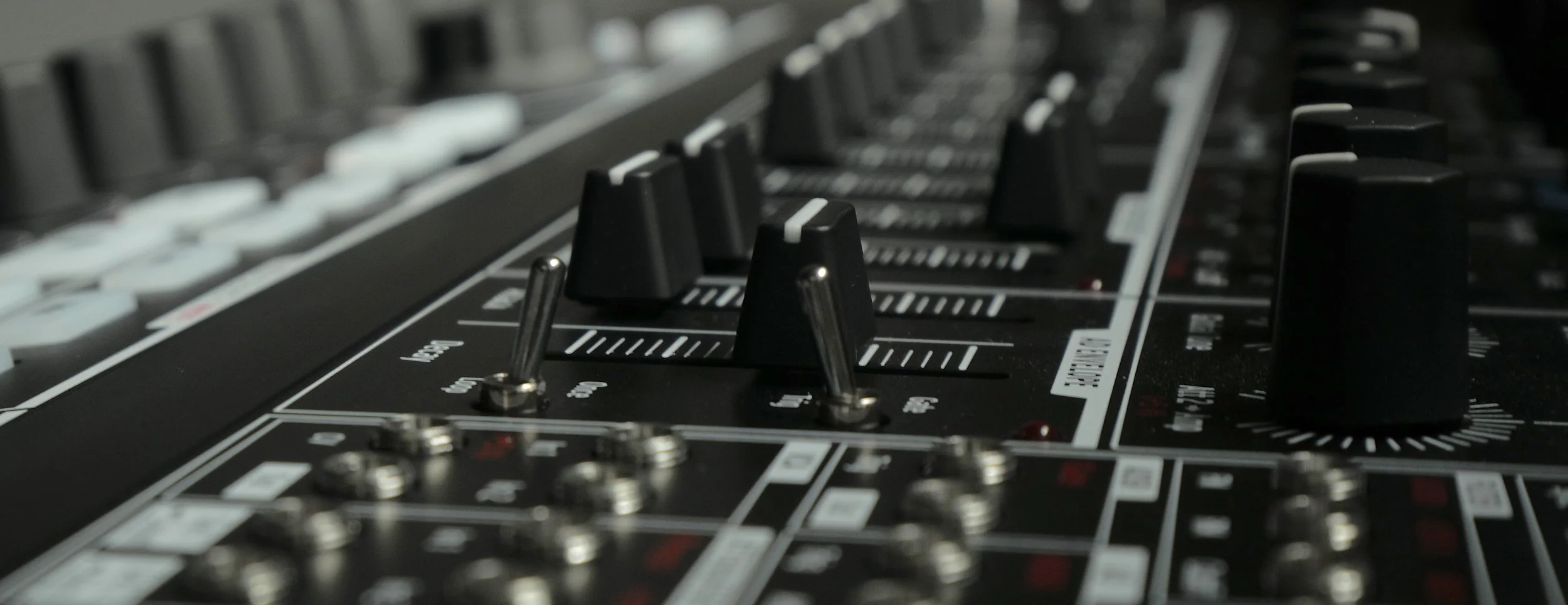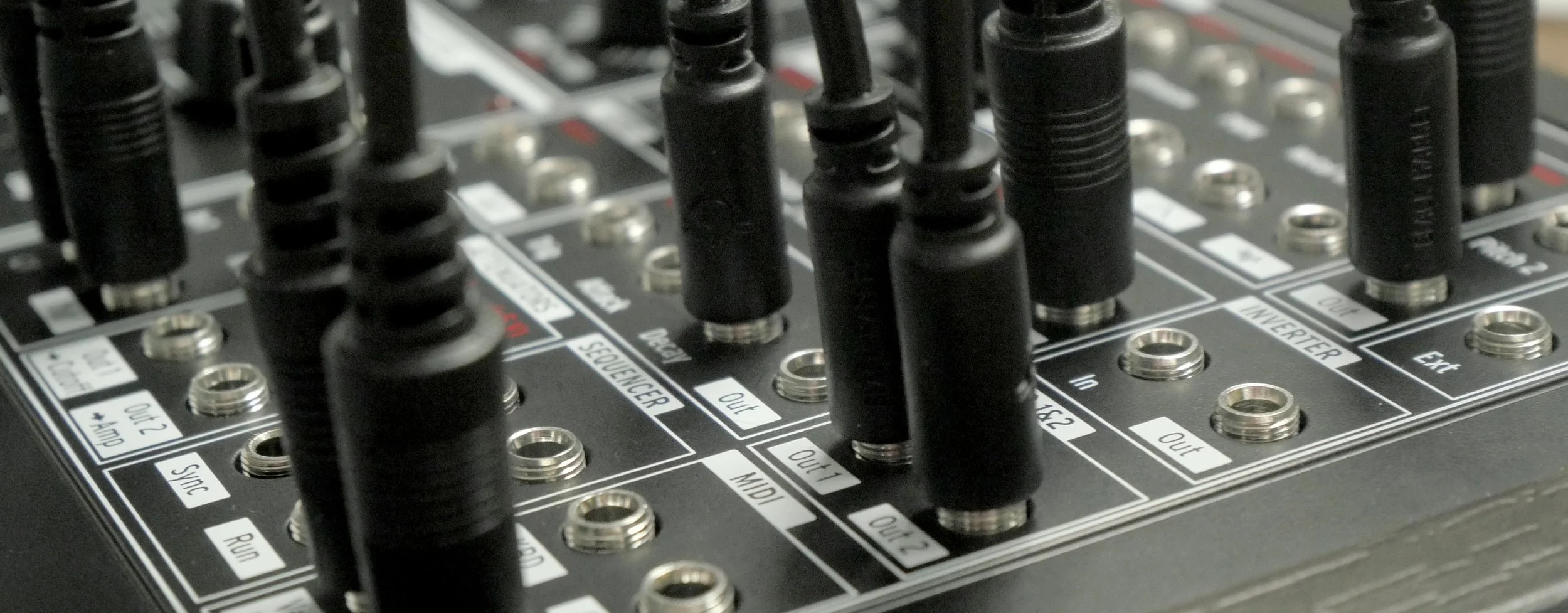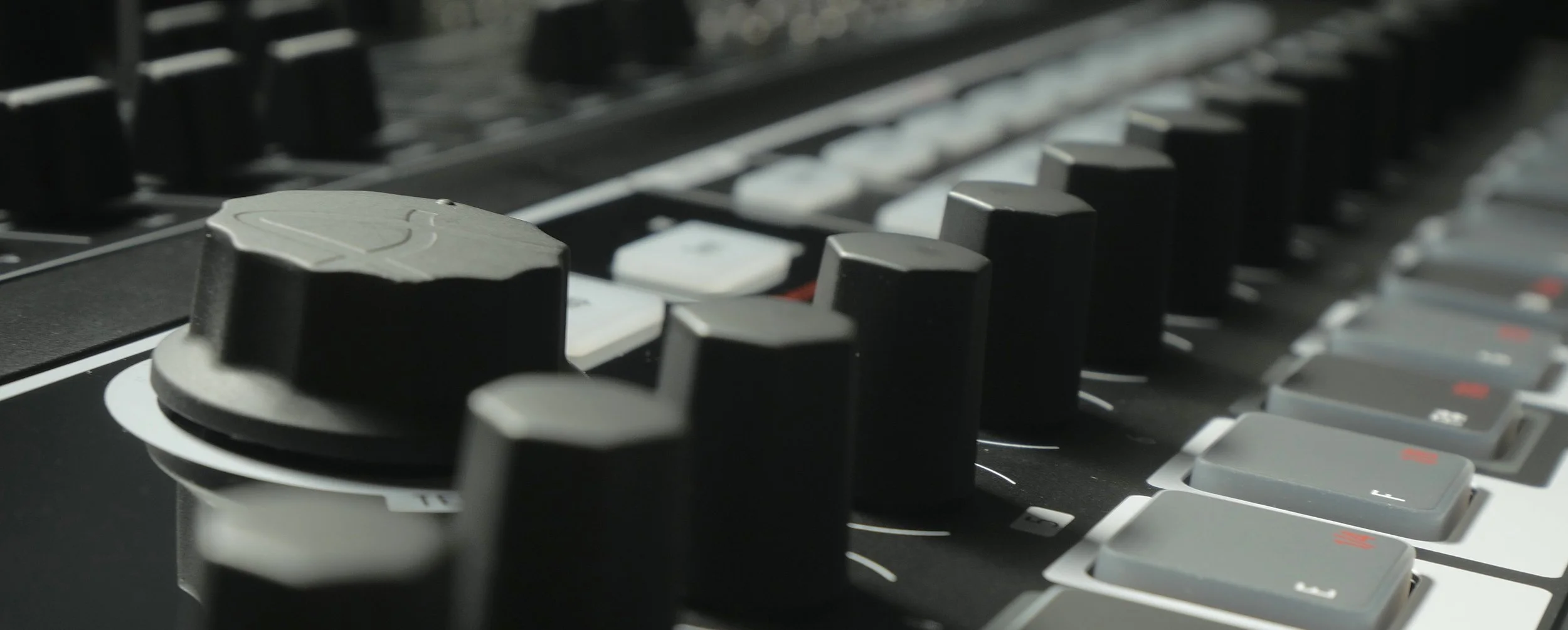Arturia MiniBrute2S Review
I’ve had a few sessions to jam with the MiniBrute2S and so far I’ve had a blast every time, this thing is great for basses, arpeggios, metallic beats and weird noises.
Having something pre-routed and playable, but with an extensive patchbay for expanding and experimenting with signal path is a blast. not only is the oscillator section fairly deep, but having the freedom to patch things out at will is incredibly versatile.
What really makes the MiniBrute2S for me is the inclusion of a step sequencer, and it’s not a simple 16 step basic looper, there’s quite a few interesting ways you can play with this sequencer to generate many different patterns. MiniBrute2S really feels like the perfect sequencer/ expansion to a modular setup, t’s like a new collection of modules, and a pattern generator all in one.
Thinking of it in terms of modules you’d get: 1 Complex OSC, 1 Dual LFO, 1 Filter, 1 Envelope, 1 Wave folder, 1 VCA, and 1 utility (invert/attenuate) + the Sequencer. That’s like 8 modules all in one.
(I also find it nice to just be able to play with it standalone, instead of having to turn on both a sequencer and rack, if we’re still thinking of it in terms of a Eurorack sequencer)
Build: For the most part it seems built like a tank, at least the body. Maybe someone can leave a comment, but are the side panels actually wood? The knobs all feel incredibly smooth and slick, with the exception of the center detent filter FM and RM knobs, which both feel a bit cheaper.
The sliders all feel great and have a decent range of motion. I am concerned about the patch bay though, as none of the connectors are attached to the face plate, so they have a bit of wobble. The encoders and buttons all feel ok, not bad, but not the best.
The layout of everything makes sense and is fairly readable at a glance.
OSC/Filter: There’s a lot to explore here, if this unit was JUST an osc module for eurorack, it’d already be pretty sweet. You get all the classic waveforms of course, with PWM and “ultra saw”, but you also get a “metalizer” triangle wave, which is basically a triangle into an analog wave folder, and it sounds incredible. On top of this there is a secondary oscillator which can be used for sine wave or sub bass, but also makes a great modulation oscillator, or sync source. Analog sync is always a nice addition, and really helps tame the analog FM. Between different OSC shapes, wavefolding, FM and Sync there’s just a ton of tones you can create pre filter. But with creativity in the patch bay you can get a whole lot more, for example: you might use the VCA to get ringmod, or use filter tracking on the filter etc. It’s also crucial that I mention the metalizer has an input, this does bypass the triangle wave, but allows you to “metalize” any signal.
The filter is fairly basic, the inclusion of FM is always nice, and the rare RM (resonance modulation) is exciting, IDK if I’ve ever seen that directly on a front panel before, but I do know I’ve wanted it. It’s not the smoothest filter in the world, it has a character, if you like that character, it’ll be a blast, if not, it does the job. I’m glad it has a notch filter, but I really wish notch filters would drop resonance in favor of a spread control. Finally the “brute factor” is more of a filter feedback type control, inspired by an old analog trick of sending a synths signal back into its oscillator. This “brute factor” distorts the signal and really drives the filter into heavy feedback.
Modulation: There’s only two LFOs and 2 envelopes, but you get a couple more options in the sequencer which we’ll get to later. The LFOs are simple, but do include SH/smooth random and will run free or beat synced, but unfortunately do not have a “rate” input in the mod matrix. The first envelope is basic, it can get fairly snappy, but not a whole lot else to write about. The second envelope is where the fun’s at, it’s just an attack/decay, but it has the ability to loop it’s self for really fun rhythmic modulation that goes up into audio rate. What makes this even more special is having control inputs for the attack and decay stages to really get things moving.The patch bay is what makes MiniBrute2S so versatile though, there’s a fair bit pre-routed on the surface that you can bypass, but the matrix has 48 patch points (28 ins and 20 outs). These patch points include a VCA and attenuators allowing you to freely patch various aspects of Minibrute2S with each other to form interesting combinations and experiments. If you have any modular or semi modular stuff, these combinations essentially multiply together. So thinking of the MB2S as a controller or addition to a modular setup really opens up its potential
Sequencer: the Sequencer is where MiniBrute2S really comes together for me, at first glance it looks like a simple 4 bar step sequencer, but it is capable of some rather cool stuff. As a step sequencer it’s quite fun, I always love the TR style step activation system, nothing beats it IMO. Having an encoder per step is a joy too, I’ve rarely been able to use hardware that does this, and it’s amazing what kind of melodies this can pull out of you. You can quantize to different keys, meaning the encoders will never be on a wrong note, I’ve even just jammed on a one step pattern using the encoder to play melodies. Changing key is done with the shift controls, here you can set the tempo division, which swaps on the fly, and step direction, which allows you to play forward, reverse, pingpong, or random.
Playing with these shift functions can be a very fun performance mechanic, especially in conjunction with the “loop” mode, which lets you hold down any two steps, and it will loop between them, resuming playback when you let go.
There are also 2 “mod” sequencers, which can each have their own independent pattern directions, tempo divisions, and step lengths, allowing for all sorts of polymetric and generative patterns.The mod sequencers have a few different modes they can work in; They can be used as step sequencers, outputting different voltage per activated step, Envelope mode, which triggers a decay envelope per activated step, with the decay rate based on step value. Sine/Triangle/saw/ramp/square waves, where each step plays an LFO with the division determined by the step value if activated. And Sample hold mode, a stepped randomizer, with the rate determined by the step value if activated. These modes make up for the lack of LFO rate control, as you can essentially use them as variable rate LFOs.
Combining all these sequencer features I’ve had a lot of fun creating evolving loops that can be played with in various creative ways
I haven’t gone too much into saving/ loading sequences, or the “instant change mode” or chaining. So there is still much more to explore here
being that you can’t save the synth state or patch bay along with a sequence, I think I’ll be using these as templates and utilities. mostly to get quick presets for the various mod sequence states.
From my experience MiniBrute2S excels at rhythmic and bass sounds, gritty basses and kicks, and metallic clangy leads
All in all, I’m not sure if I’ll be able to return this one to Zzounds, I might just have to buy it, it’s been a blast every time I pick it up, and I can totally see myself incorporating it into music or using it along side other gear I own.
I’m still playing around with various patch bay routings and sequencer ideas and have yet to hook it up with my small Pittsburgh system. I haven’t mentioned it yet, because I feel like it’s such a cliche thing to say, but MiniBrute2S does sound pretty damn warm, it’s a bit fuzzy and and muddy too, but it just kinda works.
if this article helped convince you to purchase the MicroFreak, please consider using one of my affiliate links below. (after you have searched to make sure you can’t get a better deal elsewhere)
MiniBrute2S: https://bit.ly/3By4erA
Zzounds: https://www.zzounds.com/a--3979412



